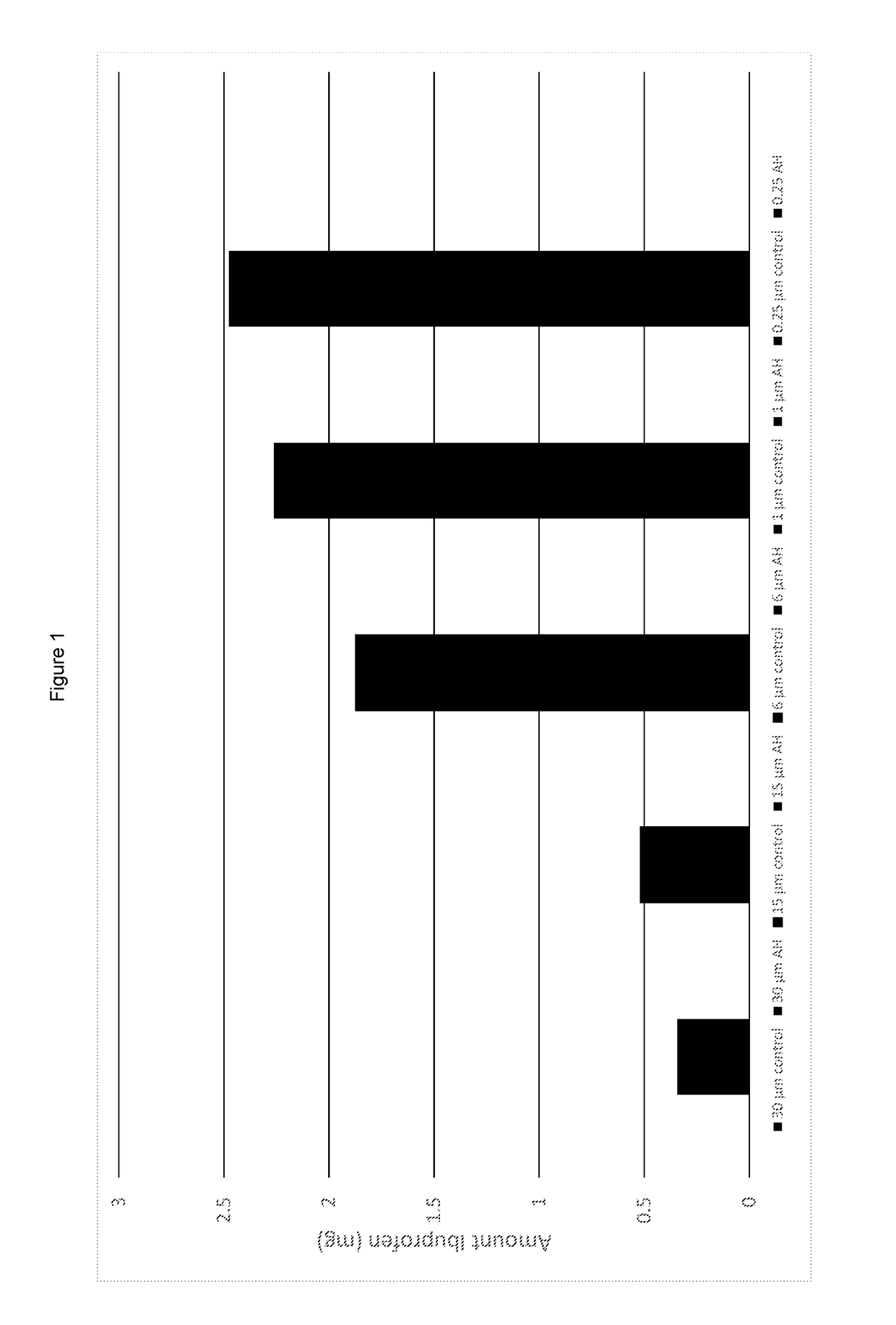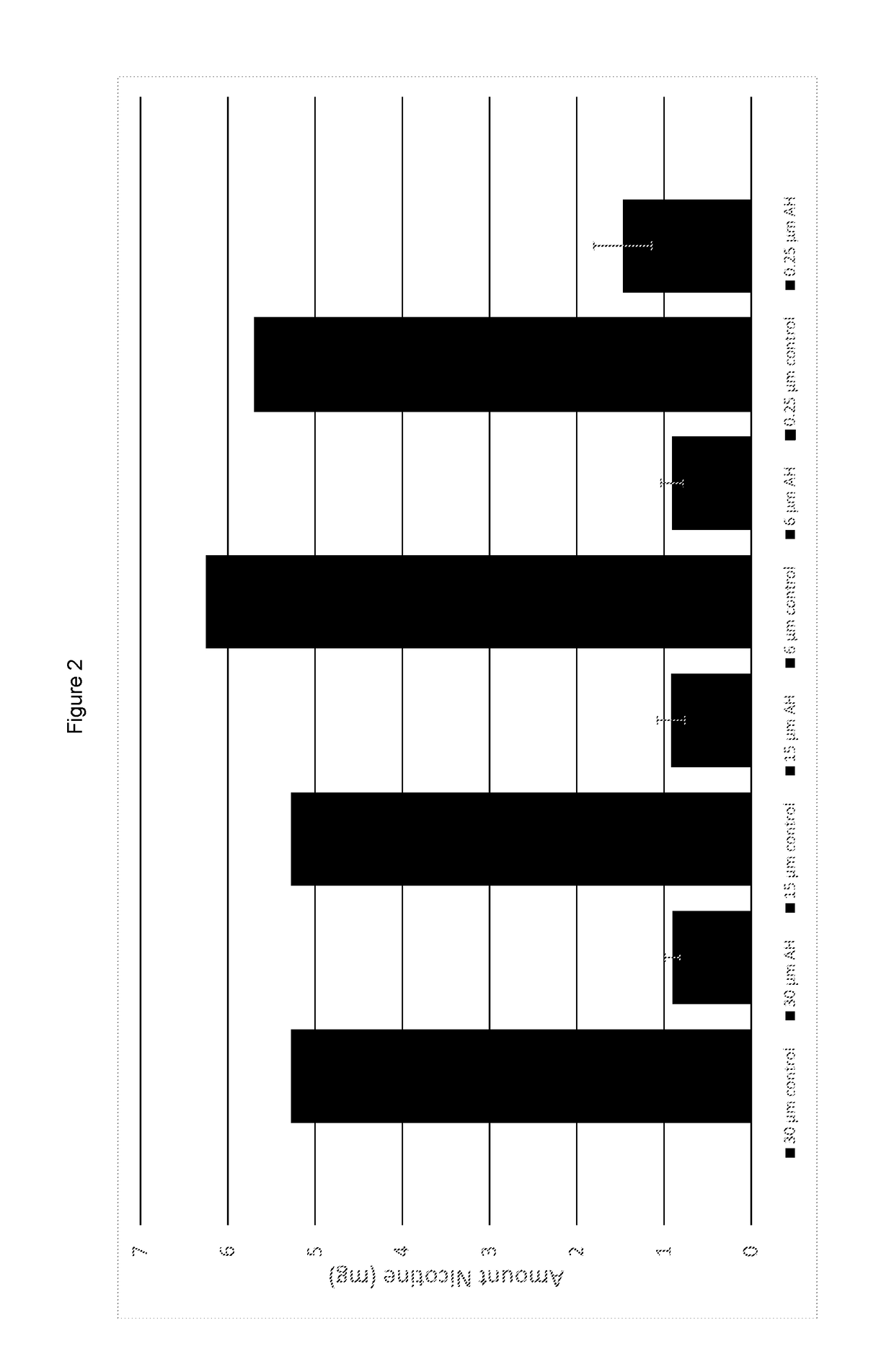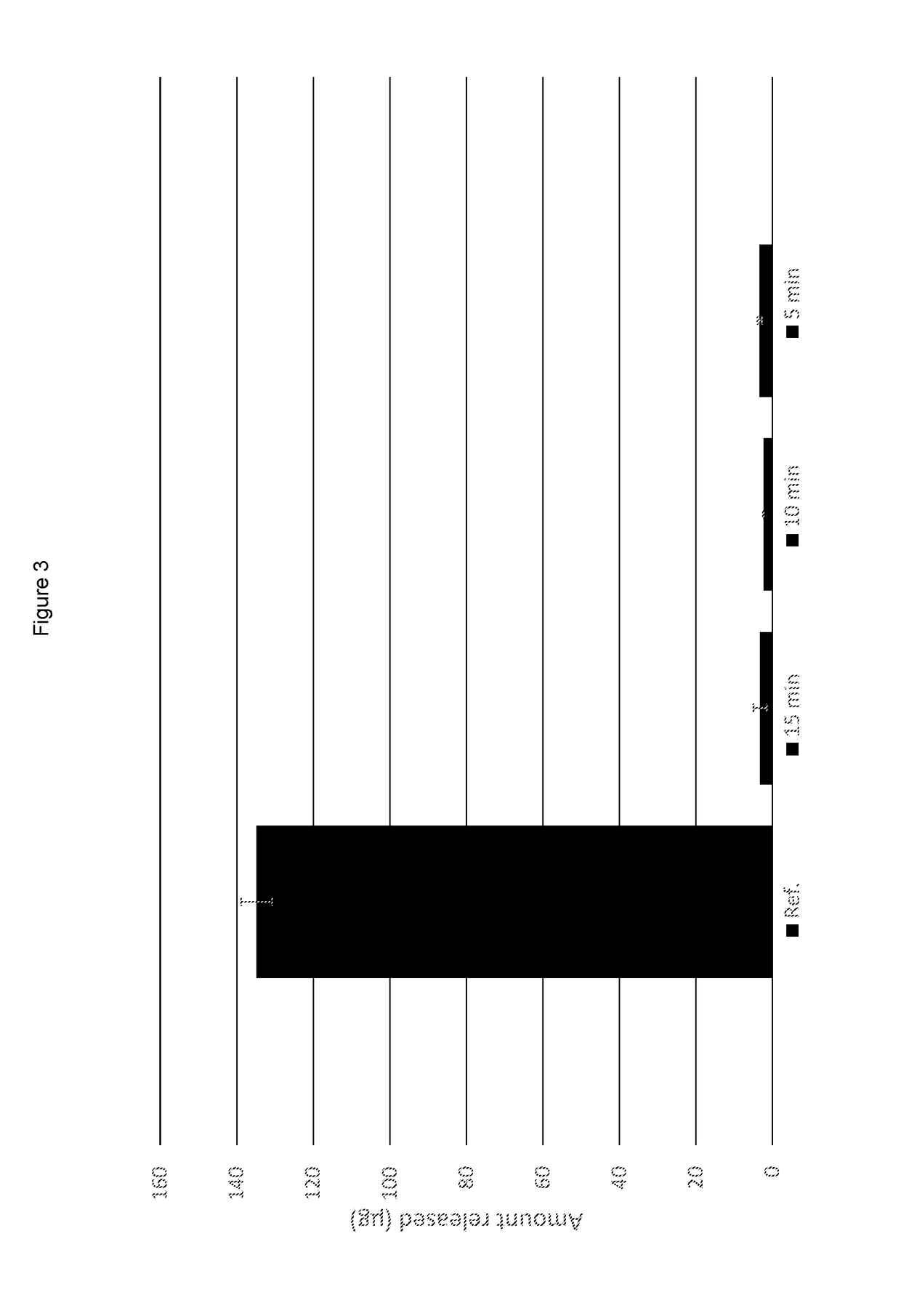Devices for evaporation and inhalation of nicotine
a nicotine and nicotine technology, applied in the field can solve the problems of health problems, affecting the use of nicotine inhalation devices, so as to achieve convenient and accurate dosing, increase radio-opacity, and sufficient mechanical strength
- Summary
- Abstract
- Description
- Claims
- Application Information
AI Technical Summary
Benefits of technology
Problems solved by technology
Method used
Image
Examples
example 1
ing
[0204]Ceramic discs comprising ibuprofen (IOL Chemicals and Pharmaceuticals Ltd, India) were prepared using aluminium oxide (Al2O3; Keranova, Sweden) as follows.
[0205]Ceramic discs (Al2O3) with different pore sizes (0.25, 1, 6, 15 and 30 μm) were prepared in two sizes: (i) 63 mm in diameter and 6.3 mm in thickness (pore sizes 0.25, 1 and 6 μm); and (ii) 48 mm in diameter and 6.3 mm in thickness (pore sizes 15 and 30 μm). The porosity was approximately 40% vol and the density 3.75 g / cm3 for all discs according to product specification.
[0206]The discs (pore sizes 0.25, 1, 6, 15 and 30 μm) were soaked in a 400 ml in phosphate buffer with pH 7.4 (one phosphate buffer saline tablet (Sigma-Aldrich, USA) dissolved in 200 ml deionized water) with a concentration of 408.5 μg / ml ibuprofen for 24 hours. The discs were dried in room temperature for 24 hours. The discs were heated in an oven at 250° C. for 15 minutes, the control discs were not heated. All discs were measured for concentratio...
example 2
ing
[0208]Ceramic discs comprising nicotine (nicotine solution (24 mg / ml), Ritch Group Ltd, United Kingdom) were prepared using aluminium oxide (Al2O3; Keranova, Sweden) as follows.
[0209]Ceramic discs (Al2O3) with different pore sizes (0.25, 1, 6, 15 and 30 μm) were prepared in two sizes: (i) 63 mm in diameter and 6.3 mm in thickness (pore sizes 0.25, 1 and 6 μm); and (ii) 48 mm in diameter and 6.3 mm in thickness (pore sizes 15 and 30 μm). The porosity was approximately 40% vol and the density 3.75 g / cm3 for all discs according to product specification.
[0210]A nicotine solution (0.25 ml; corresponding to 6 mg nicotine) was dispensed on the surface of the ceramic discs (pore sizes 0.25, 6, 15 and 30 μm). The discs were dried in room temperature for 24 hours. The discs were heated in an oven at 188° C. for 15 minutes, the control discs were not heated. All discs were measured for amount of nicotine in 400 ml phosphate buffer pH 7.4 at 37° C. (USP paddle method (paddle speed 50 rpm), V...
example 3
ing
[0213]Aluminium oxide ceramic rods were obtained from Ceramtech (Sweden): Al2O3 cylindrical rods, 3 mm diameter and 10 mm length containing 4 bore holes (oriented axially) having a diameter of 0.8 mm.
[0214]Calcium Sulphate Rods and Coins
[0215]Calcium sulphate alpha hemihydrate (CaS) rods were obtained from Bo Ehrlander AB (Sweden). Shaped silicon rubbers were used as molds for both rods (diameter: 6, length 12 mm) and coins (diameter: 12 mm, thickness: 2 mm). The calcium sulphate was mixed with deionised water (Liquid / Powder ratio of 0.4 (w / w)) to form a homogenous paste, which was filled in the rubber molds. When the paste was applied, the molds were set to dry for at least 12 h under ambient conditions.
[0216]Geopolymer Coins
[0217]Reagent grade kaolinite, fumed silica (7 nm particle size) and reagent grade sodium hydroxide were obtained from Sigma-Aldrich (Sweden). Sodium silicate solution was manufactured by dissolving sodium hydroxide (NaOH) and fumed...
PUM
| Property | Measurement | Unit |
|---|---|---|
| porosity | aaaaa | aaaaa |
| porosity | aaaaa | aaaaa |
| pore size | aaaaa | aaaaa |
Abstract
Description
Claims
Application Information
 Login to View More
Login to View More - R&D
- Intellectual Property
- Life Sciences
- Materials
- Tech Scout
- Unparalleled Data Quality
- Higher Quality Content
- 60% Fewer Hallucinations
Browse by: Latest US Patents, China's latest patents, Technical Efficacy Thesaurus, Application Domain, Technology Topic, Popular Technical Reports.
© 2025 PatSnap. All rights reserved.Legal|Privacy policy|Modern Slavery Act Transparency Statement|Sitemap|About US| Contact US: help@patsnap.com



